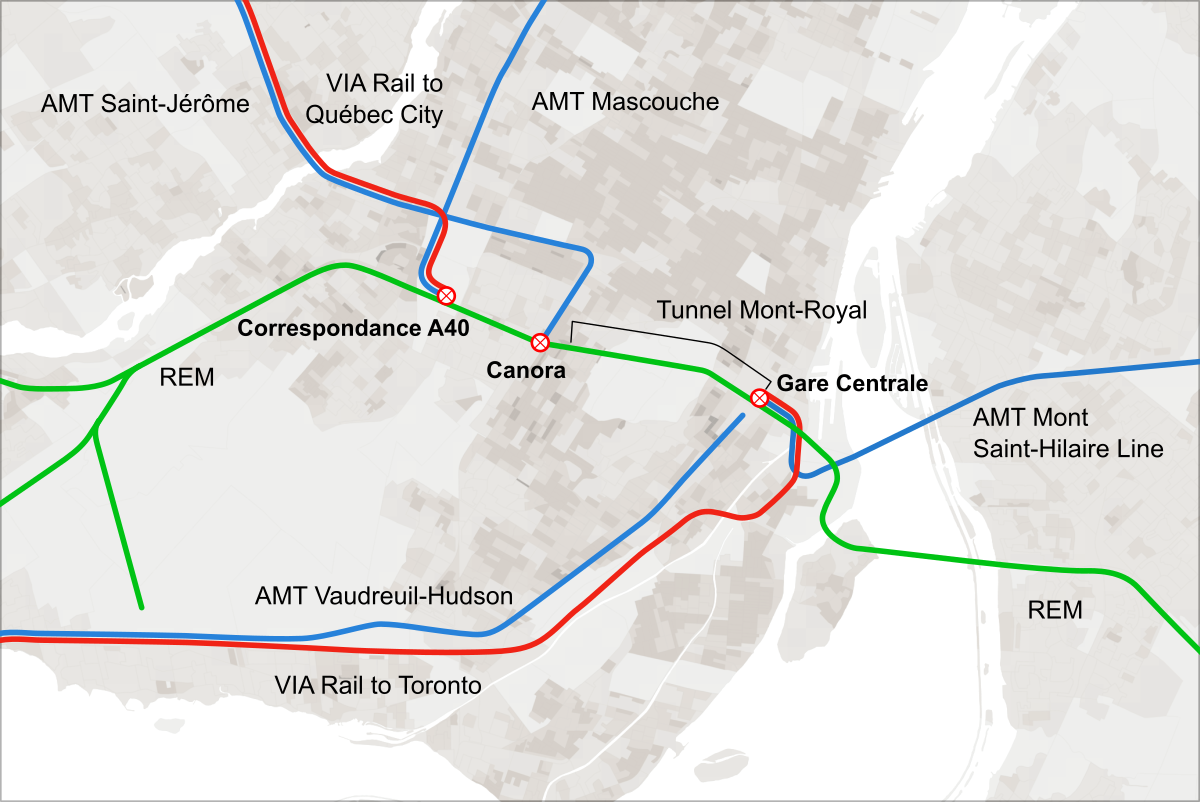amnesiajune
Senior Member
I remember posting this in-depth a while ago, but when you do the math, the belief that the vast majority of people travelling between Toronto and Montreal/Ottawa are on the 401 is obviously not true. Air travel alone has around 17,000 seats between Toronto and Montreal/Ottawa on an average weekday. Via Rail now has 16 round trips, which is another ~10,000 seats per weekday. Megabus has ~1,800 seats between Toronto and Montreal, and Greyhound has ~800 between Toronto and Ottawa. That's more than 29,000 seats between Toronto and Ottawa or Montreal by mass transit.
The 401 has 27,400 cars, trucks and buses travelling between Gananoque and the I-81 interchange, and a lot of those cars (obviously) are coming from somewhere nowhere near Toronto and/or going somewhere nowhere near Ottawa or Montreal. Some of those bus and rail passengers are coming from an intermediate stop too, but most are not.
So all of this goes to support something that should be plainly obvious - hardly anyone is driving by themselves between two of the corridor's three major cities. Given any mass transport option, they'll take it. When someone is driving alone on one of those trips, it's usually because their trip has no mass transit alternative. People travelling with others (families in particular) aren't likely to take mass transport regardless of the speed or frequency - even with whatever driving costs you pile onto the math, it's still significantly cheaper for them to drive, and neither HSR nor HFR will lower the cost of rail travel.
The 401 has 27,400 cars, trucks and buses travelling between Gananoque and the I-81 interchange, and a lot of those cars (obviously) are coming from somewhere nowhere near Toronto and/or going somewhere nowhere near Ottawa or Montreal. Some of those bus and rail passengers are coming from an intermediate stop too, but most are not.
So all of this goes to support something that should be plainly obvious - hardly anyone is driving by themselves between two of the corridor's three major cities. Given any mass transport option, they'll take it. When someone is driving alone on one of those trips, it's usually because their trip has no mass transit alternative. People travelling with others (families in particular) aren't likely to take mass transport regardless of the speed or frequency - even with whatever driving costs you pile onto the math, it's still significantly cheaper for them to drive, and neither HSR nor HFR will lower the cost of rail travel.





